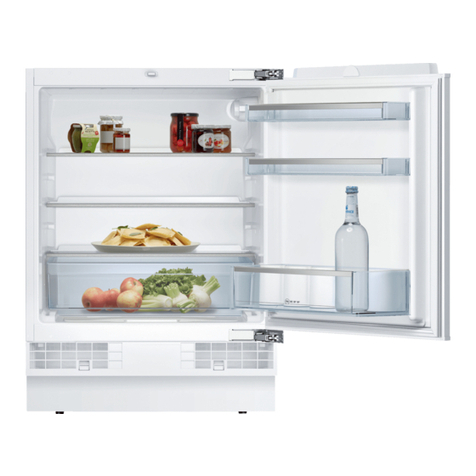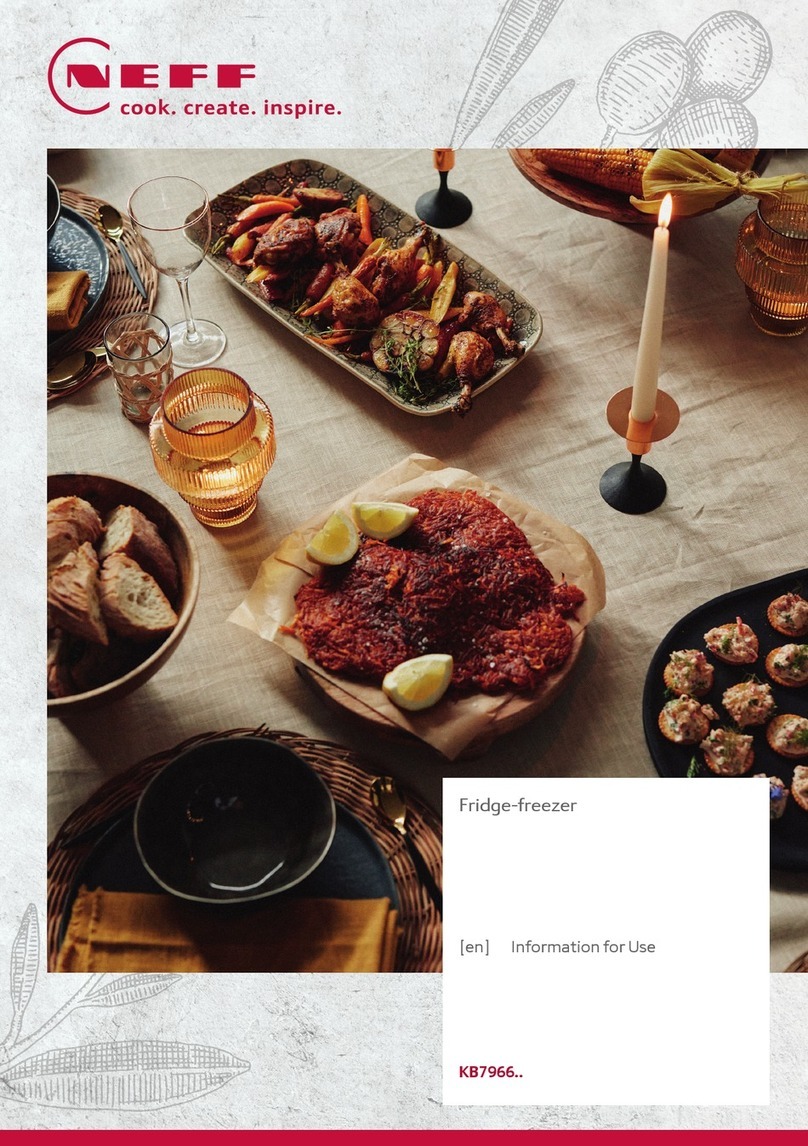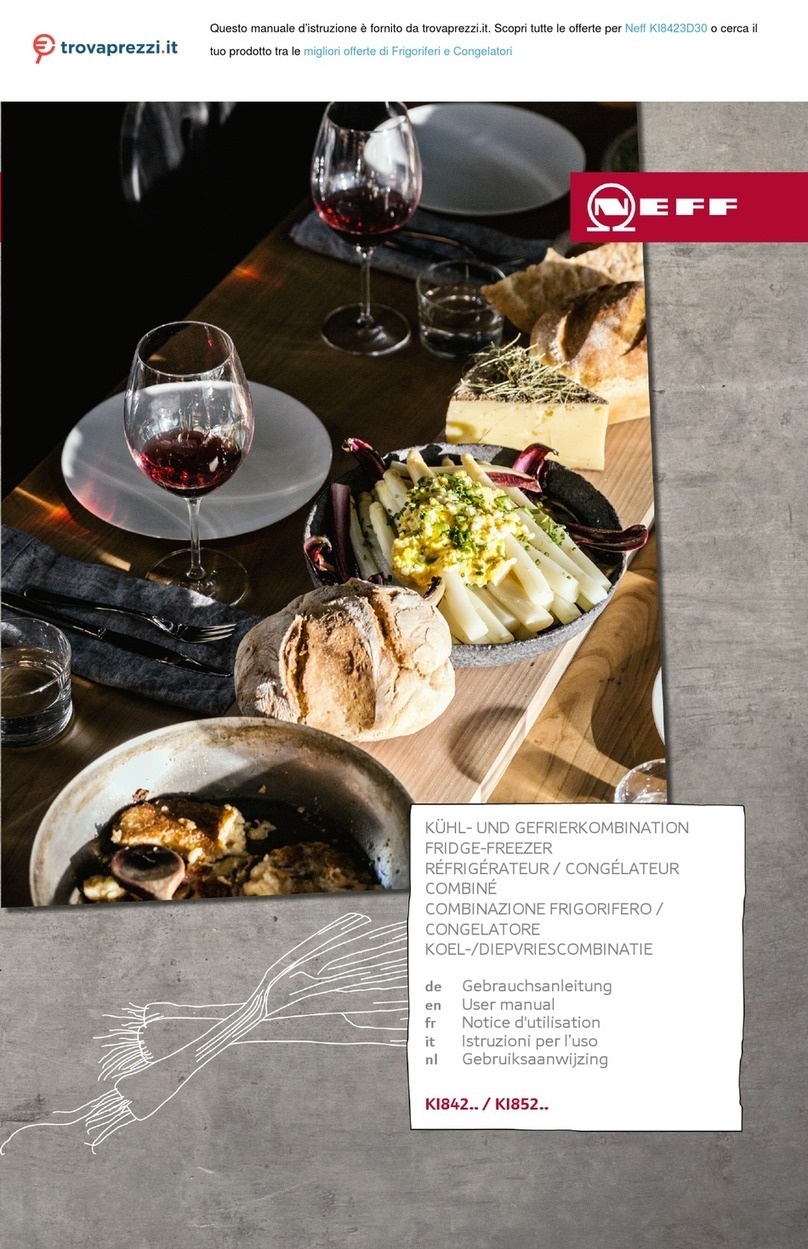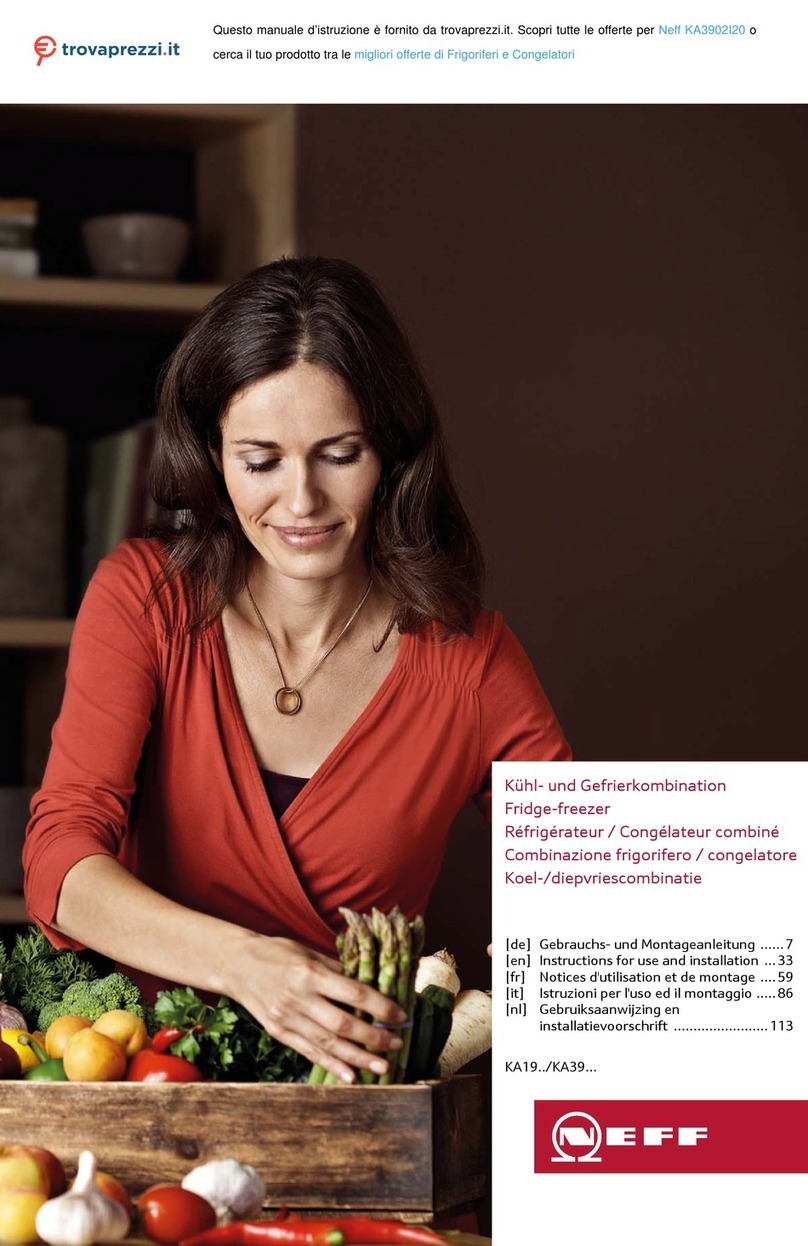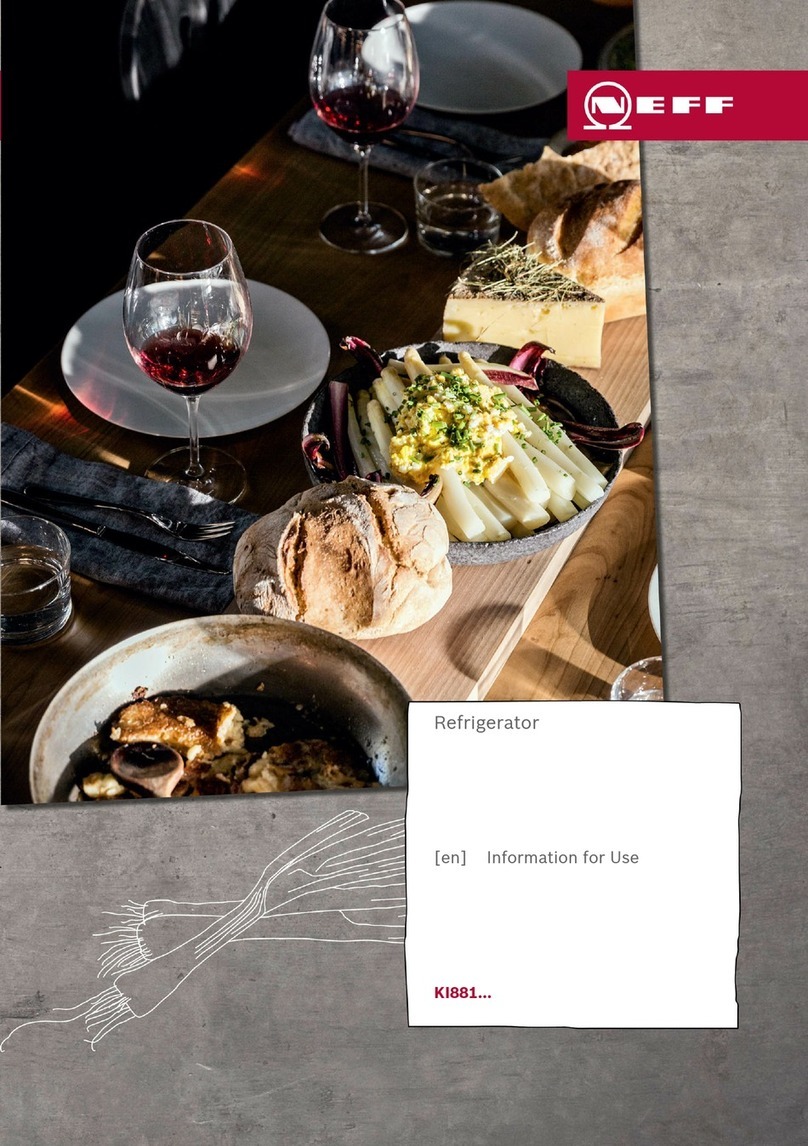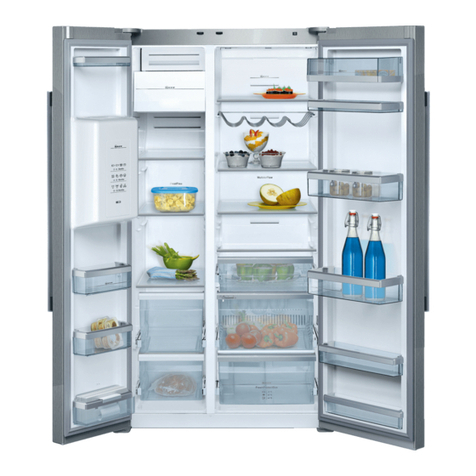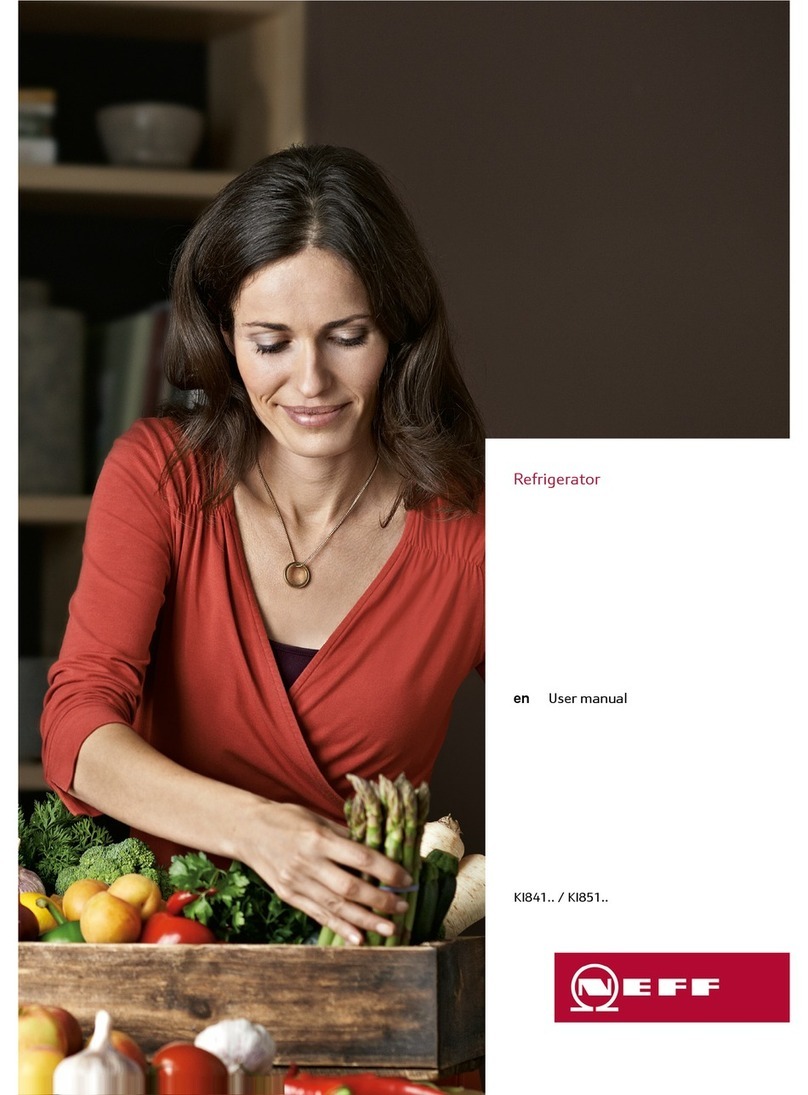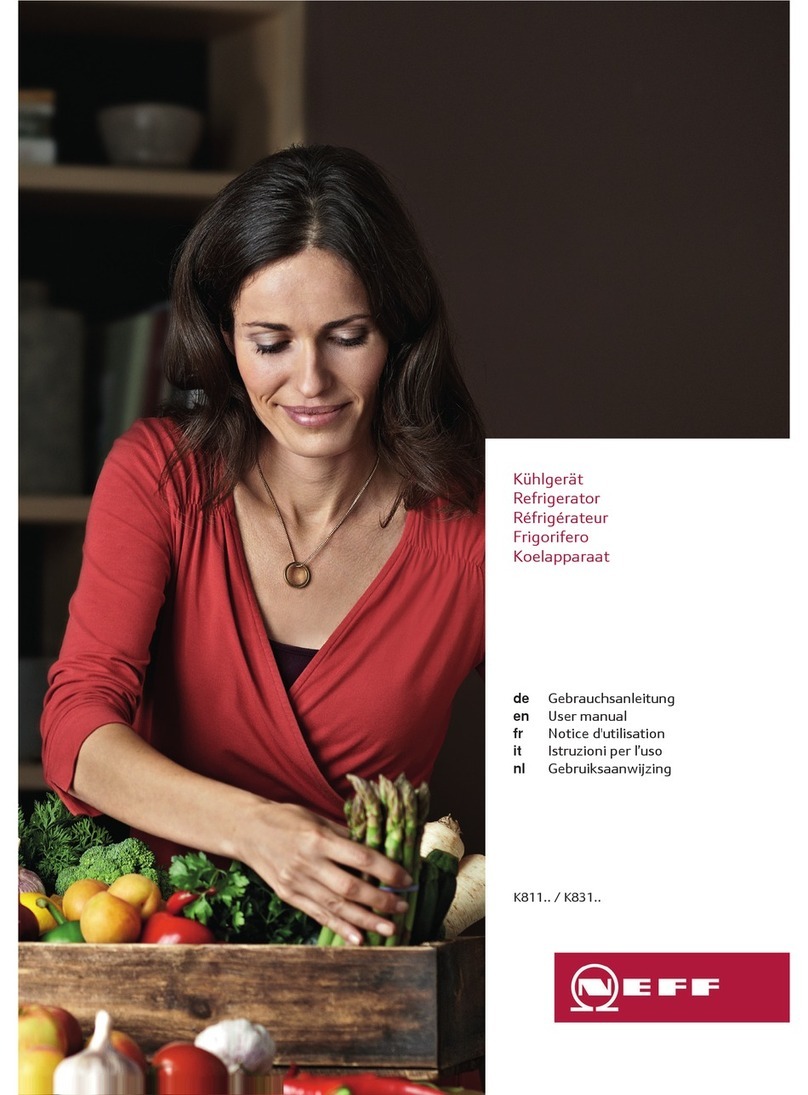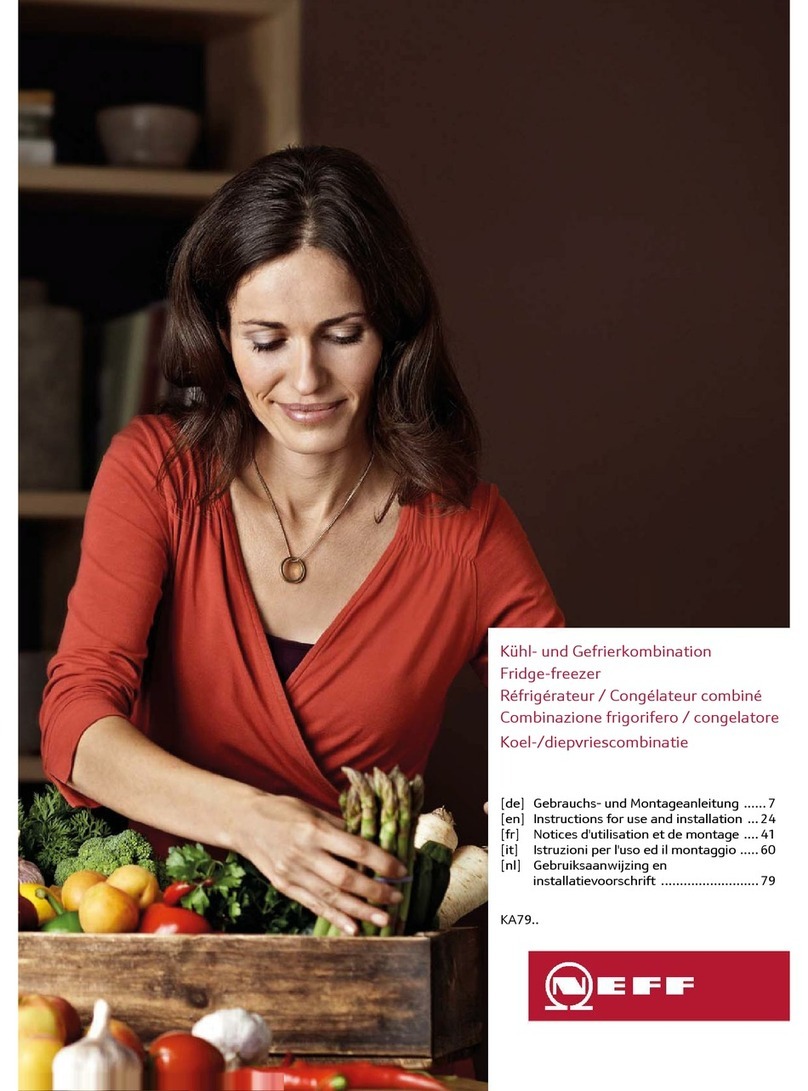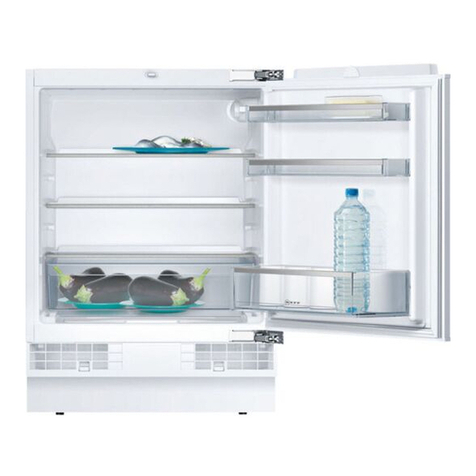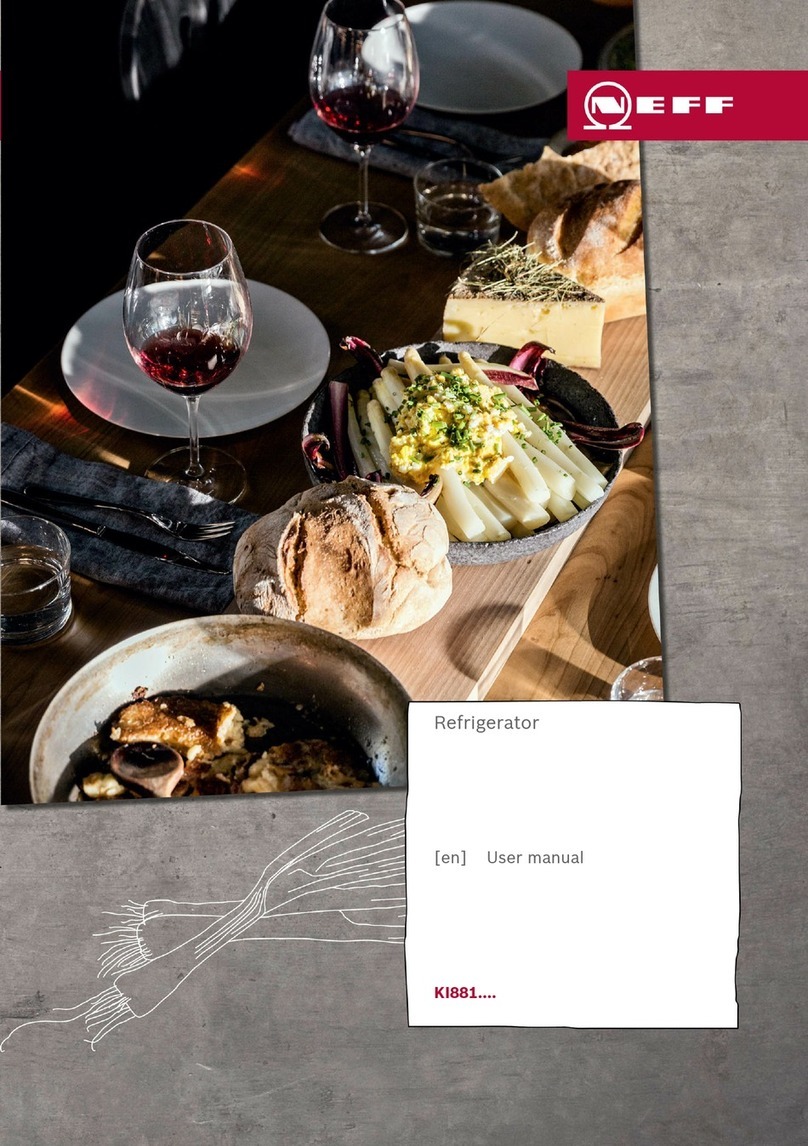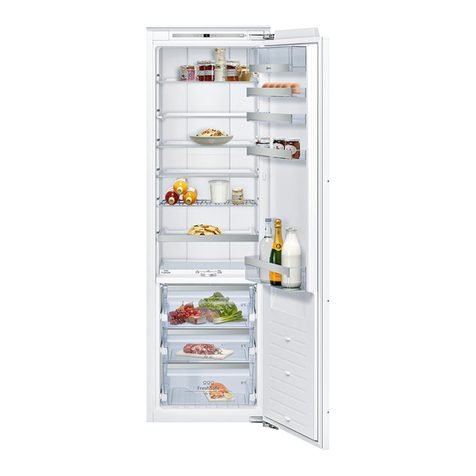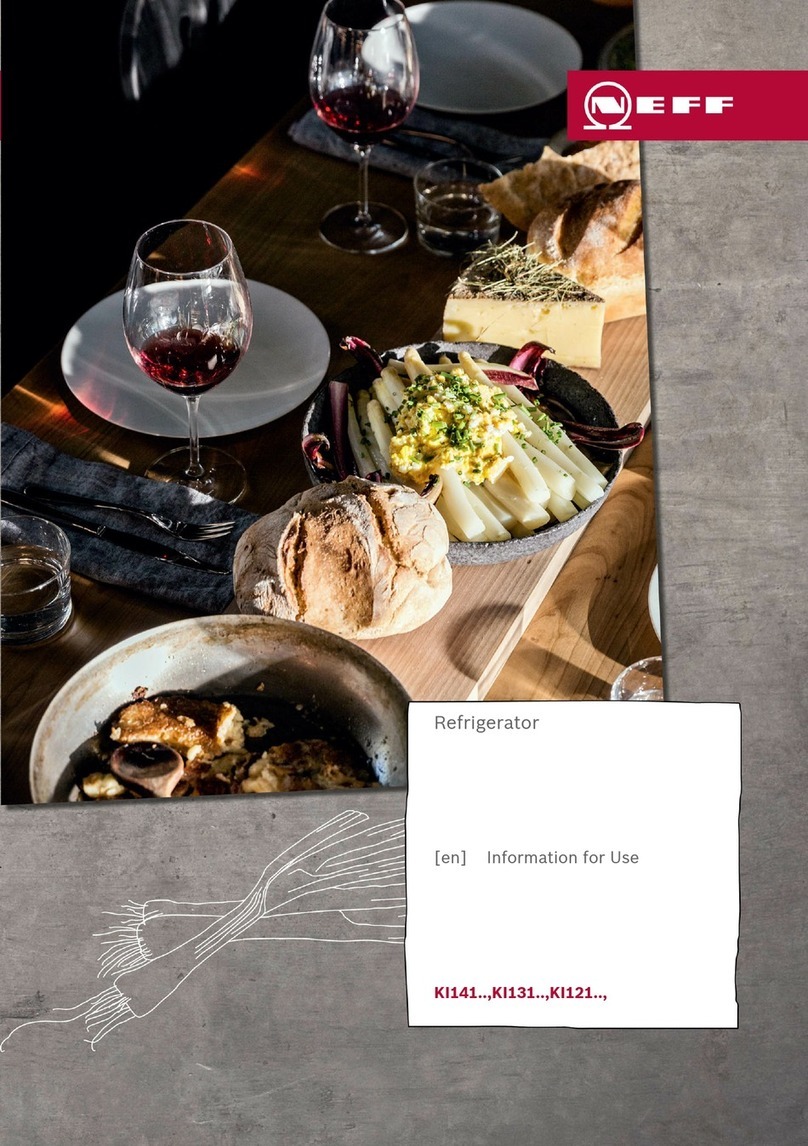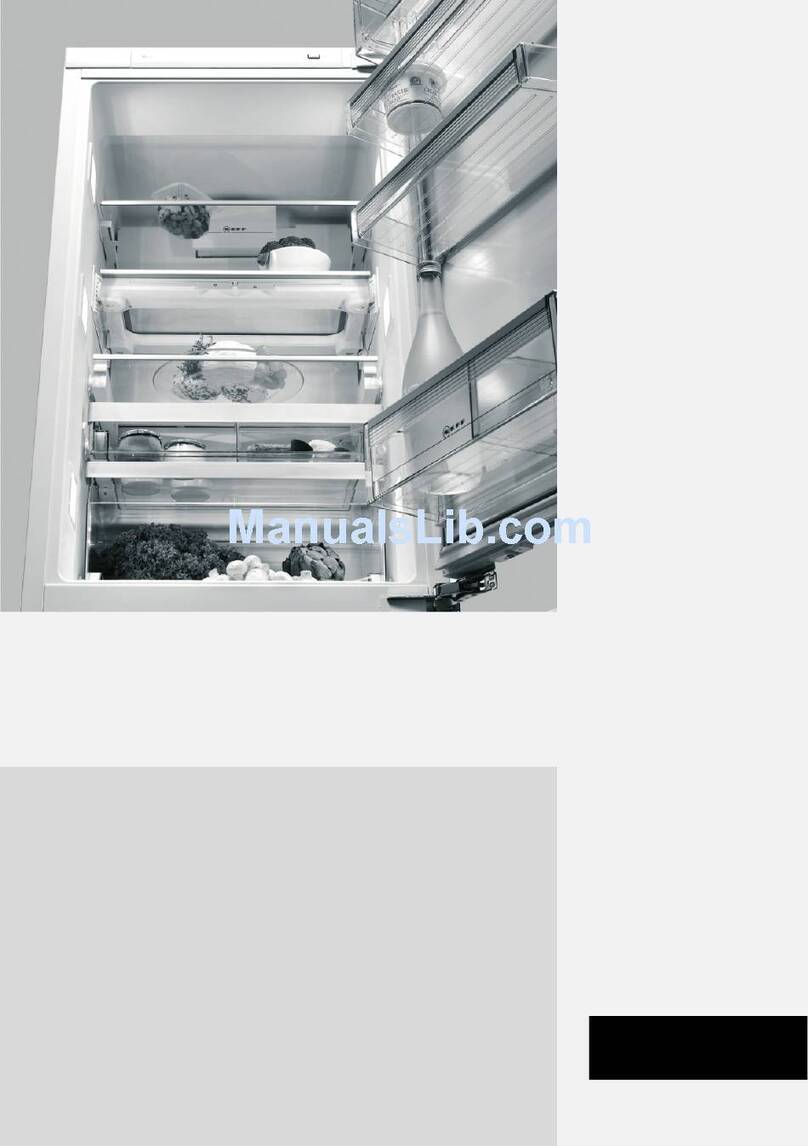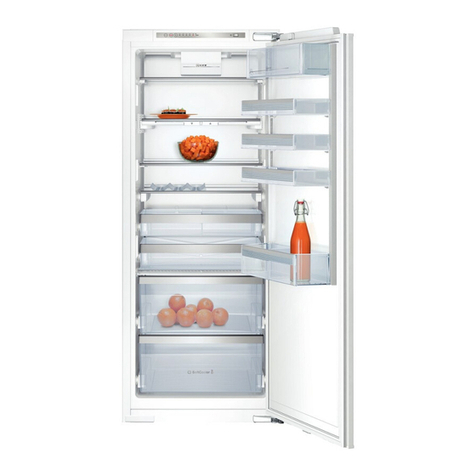
en
10
Max. freezing capacity
Information about the max. freezing
capacity within 24 hours can be found
on the rating plate. Fig.
Freezing and storing
food
Purchasing frozen food
■Packaging must not be damaged.
■Use by the “use by” date.
■Temperature in the supermarket
freezer must be -18 °C or lower.
■If possible, transport deep-frozen food
in an insulated bag and place quickly
in the freezer compartment.
When loading products
Freeze large quantities of food preferably
in the very top compartment where food
freezes particularly quickly and therefore
also gently. Place the food over
the whole area of the compartments
or in the frozen food container. Food
which is already frozen must not come
into contact with the food which is to be
frozen. If required, move the frozen food
to the frozen food container.
Storing frozen food
To ensure good air circulation in
the appliance, insert the frozen food
container all the way.
Freezing fresh food
Freeze fresh and undamaged food only.
To retain the best possible nutritional
value, flavour and colour, vegetables
should be blanched before freezing.
Aubergines, peppers, zucchini and
asparagus do not require blanching.
Literature on freezing and blanching
can be found in bookshops.
Note
Keep food which is to be frozen away
from food which is already frozen.
■The following foods are suitable for
freezing:
Cakes and pastries, fish and seafood,
meat, game, poultry, vegetables, fruit,
herbs, eggs without shells, dairy
products such as cheese, butter and
quark, ready meals and leftovers such
as soups, stews, cooked meat and
fish, potato dishes, soufflés and
desserts.
■The following foods are not suitable
for freezing:
Types of vegetables, which are usually
consumed raw, such as lettuce or
radishes, eggs in shells, grapes,
whole apples, pears and peaches,
hard-boiled eggs, yoghurt, soured
milk, sour cream, crème fraîche and
mayonnaise.
Packing frozen food
To prevent food from losing its flavour
or drying out, place in airtight containers.
1. Place food in packaging.
2. Remove air.
3. Seal the wrapping.
4. Label packaging with contents
and date of freezing.
